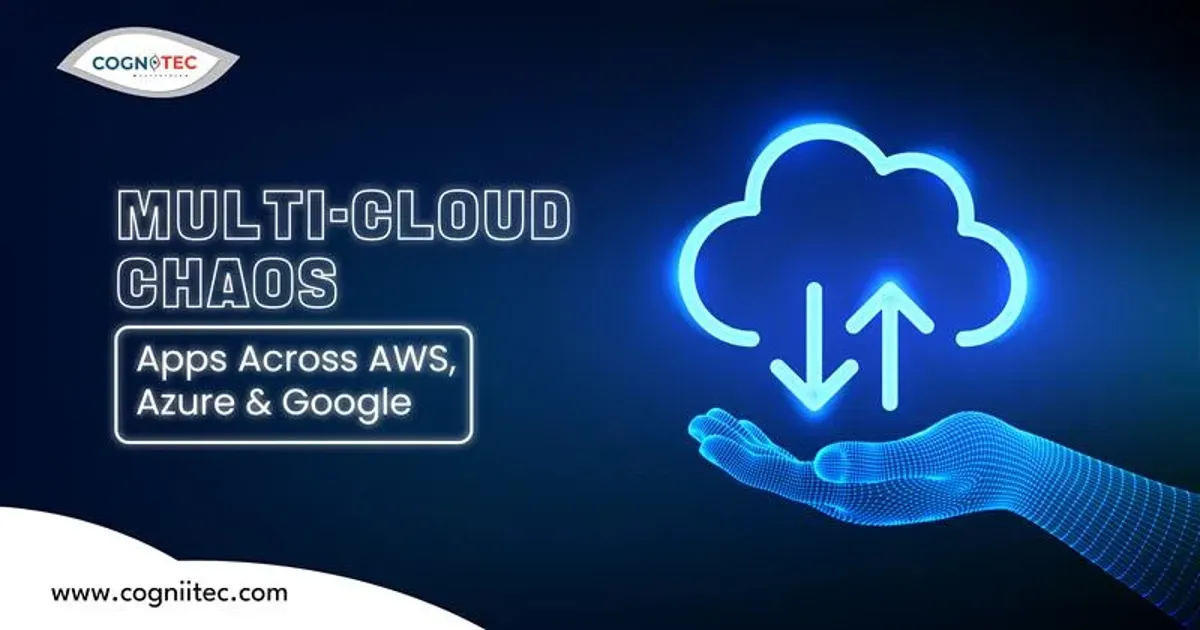
In today’s business world, an enterprise is often at a disadvantage by only utilizing a single cloud provider. More and more, organizations are taking advantage of multiple cloud platforms to leverage their individual advantages, control costs, and provide redundancy. This multi-cloud effort ultimately brings complexity to the enterprise, which has been called multi-cloud chaos. Businesses manage apps across AWS, Azure, and Google Cloud so that they can function properly, remain secure, and continue to unlock the best value from the cloud provider.
The Rise of Multi-Cloud Strategies
Businesses manage apps across AWS, Azure, and Google Cloud and this strategy is popular with enterprises as a means to avoid vendor lock-in and offer enterprise scalability. AWS, Azure, and Google Cloud all have different capabilities and advantages, whether it be AI services or serverless applications; managing applications across these providers can take extra work. With the ongoing effects of multi-cloud chaos, enterprises will define their cost alignment, operational redundancies, and security profiles, particularly as it relates to performance and monitoring. Multi-cloud chaos management allows Businesses Manage Apps Across AWS, Azure, and Google and that will help to coordinate workloads, manage performance, and develop unified governance.
Multi-Cloud Challenges
Working across multiple cloud environments introduces other changes to the environment. Teams must track configurations in multiple environments, ensure applications are compatible, and review security policies across multiple domains. Performance monitoring across multiple providers will add even more difficulty to tracking the applications without a simple, unified application monitoring. This is where multi-cloud chaos management is important and so the businesses manage apps across AWS, Azure, and Google Cloud. Centralized management tools and automation practices help companies reduce operational friction, maintain visibility, and keep their applications running well in all clouds.
Centralized Management & Automation
Centralized management is a critical part of addressing multi-cloud chaos. Platforms that marry monitoring, deployment, and security gives IT teams a means to manage their resources across AWS, Azure and Google Cloud, without having to navigate to multiple tools. That is enhanced by using automating tools that can reduce manual interventions, and reduce human error, like Infrastructure as Code (IaC), and CI/CD pipelines.
Through multi-cloud chaos management across AWS, Azure and Google, enterprises can automate updates, monitor centralized performance in real-time and enforce consistent policies, to find assurance that applications are reliable, and secure in the operating environments of the various cloud providers.
Assurance of Security and Compliance
Security and compliance can be difficult to wrangle in multi-cloud environments. Each cloud provider has its own policies and unique sets of certifications and compliance requirements. Businesses must ensure data protection, access control, regulatory compliance, and so on in every environment across all platforms.
When organizations implement multi-cloud chaos management across AWS, Azure, and Google, they establish a centralized identity management system, encrypt information in a consistent manner, and detect vulnerabilities in real-time. Because the security policy is centralized, organizations will reduce risk and confidently meet compliance requirements across industry and region.
Optimizing Costs Across Clouds
Multi-cloud environments can also create additional expenses if administrators lack the proper management tools. Resource sprawl, duplicate services, and inefficient resource consumption are common problems that organizations encounter when managing costs across clouds.
Multi-cloud chaos management across AWS, Azure, and Google allows enterprise customers to track consumption, compare costs, and optimize workloads while they are consuming resources. Organizations can assign resources to the most cost-effective provider for each task and ensure tasks run as intended without spilling over on clouds and paying for others beyond that expectation.
Innovation Speeding Multi-Cloud
With multi-cloud chaos management, businesses manage apps across AWS, Azure, and Google with dynamically changing technologies, new applications, and create a global scale across their workloads that is no longer tied to one platform.Despite the challenges, multi-cloud environments provide an unprecedented flexibility for innovation. Organizations can leverage services offered by each provider, such as AI, analytics, serverless functions, and global CDN, while controlling their infrastructure. The strategic use of multi-cloud chaos management transforms the complexity of multi-cloud environments into a competitive business advantage.
Transform Chaos into Control
Using multiple clouds is no longer an option; it’s a strategic necessity for business today. But without adequate multi-cloud chaos, businesses face inefficiencies, security risks, and cost overruns. Businesses manage apps across AWS, Azure, and Google with centralized management, automation, unified security, and continuous optimization, enterprises can control multi-cloud chaos, maintain consistent application performance, and innovate.
The future of enterprise information technology is through applying the capabilities of multiple clouds and having control, visibility, and efficiency. The companies controlling multi-cloud chaos today will lead tomorrow with agility, innovation, and digital transformation.
